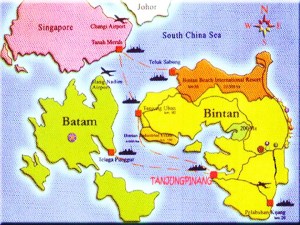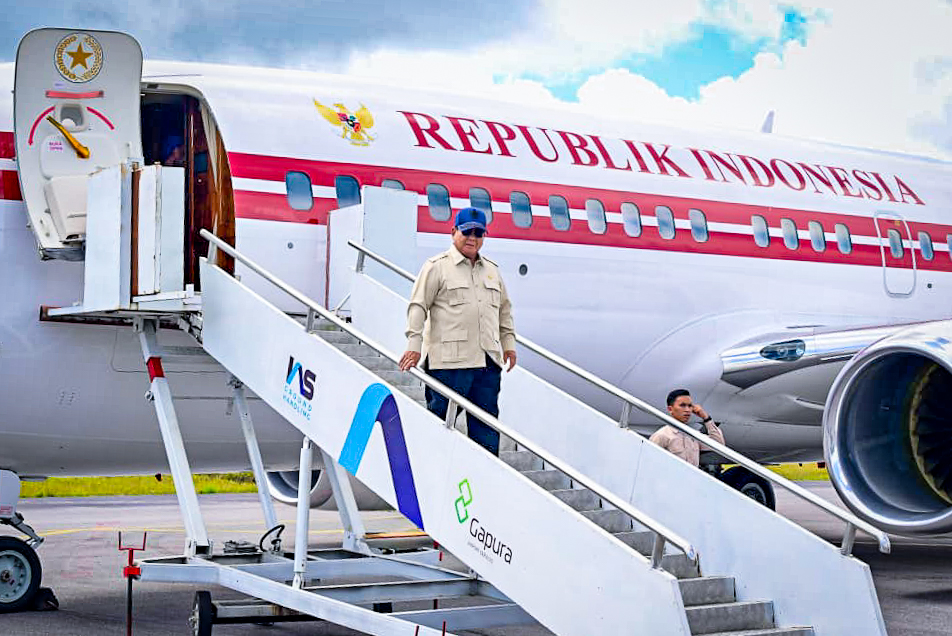Govt to Conduct Studies on Construction of Batam-Bintan Bridge
 In a bid to increase connectivity, to reduce logistics costs in Riau Islands and to support industrial and tourism sectors in Tanjung Sauh Special Economic Zone (SEZ), Galang Island as well as Bintan Island, the Indonesian Government is preparing development studies on the construction of Batam-Bintan Bridge in Riau Islands.
In a bid to increase connectivity, to reduce logistics costs in Riau Islands and to support industrial and tourism sectors in Tanjung Sauh Special Economic Zone (SEZ), Galang Island as well as Bintan Island, the Indonesian Government is preparing development studies on the construction of Batam-Bintan Bridge in Riau Islands.
“The construction is slated to start in 2020 based on the results of technical and economic feasibility studies, said Minister of Public Works and Public Housing (PUPR) Basuki Hadimuljono on Thursday (11/7) as cited from the Ministrys official website.
The Minister said that the bridge is crucial to increase connectivity between the two regions and Singapore as Singapore is currently building the Changi Airport Terminal 5 which will directly connect to Bintan.
Meanwhile, President Joko Jokowi Widodo, according to Basuki, has decided the Batam-Bintan Bridge to be built with construction period of 3-4 years.
“At present, Ministry of Public Works and Housing is preparing a Feasibility Study (FS) and Detail Engineering Design (DED) which are expected to be completed by the end of 2019,” said Basuki.
The Minister estimated that the project will cost Rp3 trillion-Rp4 trillion funded through a multi-year contract scheme. However, he stressed that the estimation depends on the results of the DED. The Government also opens opportunities for Business Entity to participate financing the project through Government-to-Business Cooperation (KPBU) scheme.
In the meantime, Ministry of PUPR through the Regional Infrastructure Development Agency (BPIW) has conducted field surveys and studies related to integration with surrounding regions as well as the load capacity.
The survey was carried out by reviewing the landing point of the bridge on Bintans (Tanjung Uban) side, followed by checking the landing point on Tanjung Sauh Islands side, Ngenang Islands side and Tanjung Ubans side.
Head of the BPIW Hadi Sucahyono said that the construction of the bridge requires attention of all parties since it has been listed in the National Medium-Term Development Plan (RPJMN) for 2020-2024 and Presidential Regulation Number 13 of 2012 on Sumatra Spatial Plan (RTR).
The discussion on the construction of the Batam-Bintan Bridge will be carried out by the BPIW along with related stakeholders to discuss technical aspects, including the geological aspect, the design of the bridge, added value aspects and benefits of the bridge.
The construction of the Batam-Bintan Bridge is expected to open up opportunities for the development of nature-based tourism. Therefore, the environmental factor and the arrangement of fishermen settlements in the area should also be an integral part [of the project], said Hadi.
Comprehensive surveys and studies of the Batam-Bintan Bridge should also consider the characteristic of the area which in the form of islands.
The Batam-Bintan Bridge will have four main pillars extending from west to east from Tanjung Talok, Batam Island, Ngenang Island, Tanjung Sauh Island, and Seri Kuala Lobam Subdistrict on Bintan Island.
The construction of the 7,035-meter bridge involves three separate packages: (1) from Batam Island to Tanjung Sauh Island along 2,124 meters; (2) from Tanjung Sauh Island to Buau Island along 4,056 meters; (3) from Buau Island to Bintan Island along 855 meters. (ES)
Translated by: Estu Widyamurti
Edited by: Mia Medyana








